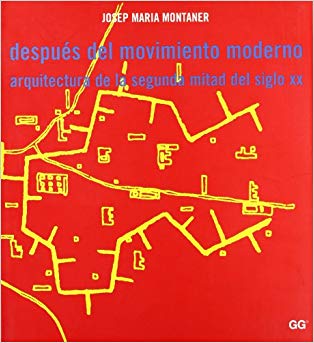ECHOS: UNIVERSITY OF CINCINNATI SCHOOL OF ARCHITECTURE AND INTERIOR DESIGN (MARCU, MARA/ MITCHELL, EDWARD)

TWISTED: LAFAYETTE 148 NEW YORK FACTORY IN CHINA (MEHRDAD, HADIGHI/ NEVEU, MARC)

MISE A POINT (LE CORBUSIER)

LAKELAND BOBBIN MAKERS (PHILIPSON, DOUGLAS;NUTTALL, LIZ;KIRKWOOD, KATE)
 At the height of production, more than seventy Lakeland bobbin mills poured out millions of wooden bobbins for the giant cotton mills of industrial Lancashire. The Philipson family, owners and managers of bobbin mills in the Lake District, were part of this huge industry for nearly a century and a half. Douglas Philipson started work at the Spark Bridge Mill in 1929 as a young lad of 15. Lakeland Bobbin Makers is his unique account of the Lake District bobbin industry and a vivid portrayal of a busy bobbin mill in its heyday. ?A fascinating graphic insight into the lives of the Lakeland men and women who worked in a now vanished bobbin making industry? Irvine Hunt At the height of production, more than seventy Lakeland bobbin mills poured out millions of wooden bobbins for the giant cotton mills of industrial Lancashire. The Philipson family, owners and managers of bobbin mills in the Lake District, were part of this huge industry for nearly a century and a half. Douglas Philipson started work at the Spark Bridge Mill in 1929 as a young lad of 15. Lakeland Bobbin Makers is his unique account of the Lake D
At the height of production, more than seventy Lakeland bobbin mills poured out millions of wooden bobbins for the giant cotton mills of industrial Lancashire. The Philipson family, owners and managers of bobbin mills in the Lake District, were part of this huge industry for nearly a century and a half. Douglas Philipson started work at the Spark Bridge Mill in 1929 as a young lad of 15. Lakeland Bobbin Makers is his unique account of the Lake District bobbin industry and a vivid portrayal of a busy bobbin mill in its heyday. ?A fascinating graphic insight into the lives of the Lakeland men and women who worked in a now vanished bobbin making industry? Irvine Hunt At the height of production, more than seventy Lakeland bobbin mills poured out millions of wooden bobbins for the giant cotton mills of industrial Lancashire. The Philipson family, owners and managers of bobbin mills in the Lake District, were part of this huge industry for nearly a century and a half. Douglas Philipson started work at the Spark Bridge Mill in 1929 as a young lad of 15. Lakeland Bobbin Makers is his unique account of the Lake DEVOLO SKYCRAPERS 3 (A.A.V.V.)

WE BUILD DRAWINGS (VV.AA.)

HISTORIA DE LA ARQUITECTURA DEL RENACIMIENTO (BENÉVOLO, LEONARDO)

A WALKING TOUR OF HISTORIC EDENTON (PEGGY, ARNOLD;KIP, SHAW)
 "A Walking Tour of Historic Edenton" provides four short, enjoyable, informative walking tours that will provide you with an educational experience. There is no musty museum, but take a walk and challenge your imagination, learn history, know the stories behind the doors - architectural beauties and history galore!
"A Walking Tour of Historic Edenton" provides four short, enjoyable, informative walking tours that will provide you with an educational experience. There is no musty museum, but take a walk and challenge your imagination, learn history, know the stories behind the doors - architectural beauties and history galore!ARCHIBET. FROM AALTO TO ZAHA HADID (VV. AA.)

DESPUÉS DEL MOVIMIENTO MODERNO . ARQUITECTURA DE LA SEGUNDA MITAD DEL SIGLO XX (MONTANER, JOSEP MARIA)
 Este libro analiza las realizaciones arquitectónicas y las teorías que las sustentan a partir de la Segunda Guerra Mundial, después de la aparición de las vanguardias y de la institucionalización de parte de ellas comomovimiento moderno. Este análisis se ha dividido en tres períodos: las continuidades y revisiones que plantean entre 1945 y 1965, la configuración de la denominada arquitectura posmoderna y las diversas y atomizadas posiciones desplegadas en los últimos años, entre 1977 y 1992. Dentro del apartado de conclusiones, esta nueva edición revisada incluye una mirada hacia dos nuevas posiciones que parecen detectarse en el mundo de la arquitectura: el minimalismo y la ecología. Josep Maria Montaner afronta con rigor el objetivo de interpretar las obras y las tendencias más significativas de la arquitectura contemporánea, situando el movimiento moderno como un fenómeno histórico ya superado y permitiendo al lector seguir los hilos de la evolución de las diversas tradiciones, concepciones y posiciones arquitectónicas. La abundancia de ilustraciones permite conocer de manera directa las obras citadas por el autor.
Este libro analiza las realizaciones arquitectónicas y las teorías que las sustentan a partir de la Segunda Guerra Mundial, después de la aparición de las vanguardias y de la institucionalización de parte de ellas comomovimiento moderno. Este análisis se ha dividido en tres períodos: las continuidades y revisiones que plantean entre 1945 y 1965, la configuración de la denominada arquitectura posmoderna y las diversas y atomizadas posiciones desplegadas en los últimos años, entre 1977 y 1992. Dentro del apartado de conclusiones, esta nueva edición revisada incluye una mirada hacia dos nuevas posiciones que parecen detectarse en el mundo de la arquitectura: el minimalismo y la ecología. Josep Maria Montaner afronta con rigor el objetivo de interpretar las obras y las tendencias más significativas de la arquitectura contemporánea, situando el movimiento moderno como un fenómeno histórico ya superado y permitiendo al lector seguir los hilos de la evolución de las diversas tradiciones, concepciones y posiciones arquitectónicas. La abundancia de ilustraciones permite conocer de manera directa las obras citadas por el autor.



